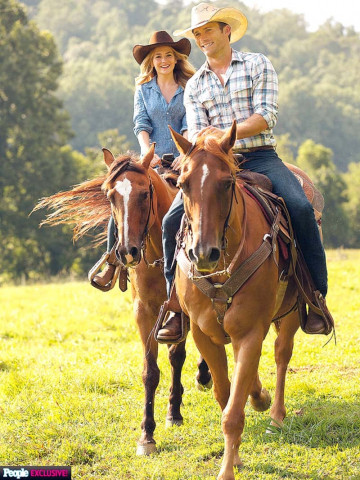Movie review: The longest ride- a predictable journey
The Longest Ride does not reach a satisfying destination

The Longest Ride does not reach a satisfying destination.
It is, perhaps, unfair to criticise a film based on a novel by Nicholas Sparks. After nine adaptations that have garnered more than a billion dollars worldwide, Sparks’ work has become a brand in itself. Common sense and logic cannot be used to determine the merits of these films. They need to be judged only on the standards of the genre they have come to represent.
In Sparks’ world, very good-looking — and always white — people from different worlds meet and fall in love. Their romance is always fascinating, adorned with clichés and set against lush landscapes. Coincidence, misunderstanding, emotion, and beatitude abound in the stories that depict trivial but exaggerated barriers that the lovers must overcome to live happily ever after.
The formula works primarily because Sparks’ characters are written vividly, and willing viewers allow themselves to be manipulated emotionally. This formula, however, fails in The Longest Ride. The story revolves around two very dull couples — Luke Collins (Scott Eastwood) and Sophia Danko (Britt Roberston) and the older Ira Levinson (Jack Huston and later Alan Alda) and Ruth Levinson (Oona Chaplin) — with no chemistry and little believability. The film’s many attempts to control emotions are consistently unsuccessful; it is virtually impossible to engage an audience that is bored and disappointed.
Luke is a good-looking bull-rider, trying to make a comeback after an event in which he was seriously hurt by a bull named Rango. He meets Sophia at a bull-riding competition and the two fall in love and start dating. The lovers spot a crashed car while driving through the picturesque landscape of North Carolina on one of their dates. They arrive at the scene of the accident to find an injured Ira inside the burning vehicle. Luke rescues him while Sophia saves a box that holds love letters that Ira wrote to his wife Ruth. The lovers start visiting the recovering Ira who enjoys having the letters read to him as he recounts details of his romance. Ruth and Ira, it turns out, were all set to marry each other during the Second World War when fate intervened by calling Ira to army service. An injury during the war left Ira unable to father children and give Ruth the large family that she dearly desired. The two overcame the hurdle by substituting their desire to have children with a passion for collecting art. Henceforth, they collected a large number of paintings while living in near perfect marital bliss. The story captivates the young lovers who identify with Ruth and Ira and find inspiration in their tale. It offers encouragement to Luke and Sophia who must overcome their own hurdles to succeed in love.
The story of The Longest Ride is not very different from other, and better, films based on Sparks’ novels. Yet, it fails because it is terribly boring and lacks interesting characters. The meet cute between Sophia and Luke is contrived and devoid of sparks. Eastwood looks good but seems to have a greater interest in displaying his admittedly well-built body than in convincingly playing the part of a determined bull-rider. Roberston is dull and bland as a student of art. Huston, Alda and Chaplin make half-hearted attempts to act well but fail to save what is a truly uninteresting film. Rango gets attention from the director and the cinematographer, as he compellingly plays the role of an indomitable beast. His is the only convincing performance in the film.

Published in The Express Tribune, Sunday Magazine, April 26th, 2015.



















COMMENTS
Comments are moderated and generally will be posted if they are on-topic and not abusive.
For more information, please see our Comments FAQ